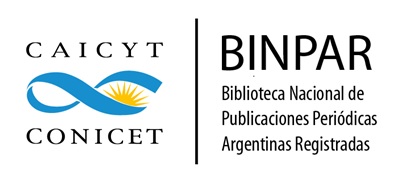Between Distance and Connectivity
Experiences in Times of Covid-19
DOI:
https://doi.org/10.24215/18524907e042Keywords:
teaching experiences, technological mediation, distancing, COVID-19Abstract
The obligatory social distancing imposed by the advance of the COVID-19 led to questioning normality and it immediately reverberated in the classrooms. The suspension of face-to-face classes presented a great challenge, and it was the teachers who quickly looked for alternatives to guarantee pedagogical continuity and bond with their students. Teaching and learning experiences mutated generating new forms of appropriation, production and consumption within the complex ecology of media. Transformative didactic experiences were presented in diverse contexts in environments with and without technological disposition.
Downloads
Metrics
References
Baricco, A. (2019). The Game. Barcelona, España: Anagrama.
Bergson, H. (2013). El pensamiento y lo moviente. Ciudad Autónoma de Buenos Aires: Cactus.
García Canclini, N. (1989). Culturas híbridas. Miguel Hidalgo, México: Grijalbo.
García Canclini, N. (2003). Noticias recientes sobre la hibridación. Trans. Revista Transcultural de Música, (7). Recuperado de http://www.sibetrans.com/trans/articulo/209/noticias-recientessobre-la-hibridacion
García Canclini, N. (2004). Diferentes, desiguales y desconectados. Barcelona, España: Gedisa.
Huergo, J. (1997). Comunicación / Educación. Ámbitos, prácticas y perspectivas. La Plata, Argentina: Ediciones de Periodismo y Comunicación.
Huergo, J. (2008). La relevancia formativa de las pantallas. Comunicar, 15(30), 73-77. Recuperado de https://www.redalyc.org/pdf/158/15811864012.pdf
Kap, M. (2014). Conmovidos por las tecnologías. Pensar las prácticas desde la subjetividad docente. Buenos Aires, Argentina: Paidós.
Kap, M. (2018). La innovación en la enseñanza: propuestas y dispositivos alternativos. En AA.VV. (2018), Narrativas, contenidos didácticos y disciplinares para la divulgación, enseñanza y aprendizaje de la historia con medios audiovisuales. Mar del Plata, Argentina: Universidad Nacional de Mar del Plata.
Loveless, A. y Williamson, B. (2017). Nuevas Identidades de Aprendizaje en la Era Digital. Madrid, España: Narcea.
McLuhan, M. (1967). El medio es el mensaje. Londres, Inglaterra: Penguin Books.
Martin, M. V. (2018). Políticas públicas de formación del Profesorado en TIC (Tesis de Doctorado). Recuperado de http://sedici.unlp.edu.ar/handle/10915/68077
Martín Barbero, J. (2003). La Educación desde la Comunicación. Bogotá, Colombia: Norma.
Orozco Gómez, G. (2002). Pedagogía de la tele-e-videncia (una propuesta mexicana de educación de las audiencias). Cuadernos Ininco (1). Caracas, Venezuela: Universidad Central de Venezuela.
Postman, N. (1998). Las 5 advertencias del cambio tecnológico. Recuperado de https://web.archive.org/web/20150904023009/http://www.globalizacion.org/desarrollo/PostmanCambioTecnologico.htm
Sassen, S. (2015). Expulsiones. Brutalidad y complejidad en la economía global. Buenos Aires, Argentina: Katz.
Scolari, C. (2015) (Coord.). Ecología de los medios: entornos, evoluciones e interpretaciones. Barcelona, España: Gedisa.
Scolari, C. A. (2018). Adolescentes, medios de comunicación y culturas colaborativas. Aprovechando las competencias transmedia de los jóvenes en el aula. Barcelona, España: Universitat Pompeu Fabra.
Vizer, E. (2007). Procesos sociotécnicos y mediatización en la cultura tecnológica. En De Moraes, D. (coord.), Sociedad mediatizada. Barcelona, España: Gedisa.
Downloads
Published
How to Cite
Issue
Section
License
The acceptance of an original by the journal implies the non-exclusive transfer of the patrimonial rights of the authors in favor of the publisher, who allows the reuse, after its edition (postprint), under a Creative Commons License Attribution-NonCommercial-ShareAlike 4.0 International.
According to these terms, the material can be shared (copy and redistribute in any medium or format) and adapted (remix, transform and create another work from the material), provided that a) the authorship and the original source of their publication (magazine and URL of the work) are cited, b) is not used for commercial purposes and c) the same terms of the license are maintained.
The assignment of non-exclusive rights implies that after postprint in Revista Argentina de Estudios de Juventud authors may publish their work in any language, media and format; in that case, it is requested that they signal that the material was originally published by this journal.
Assignment also entails the authors’ authorization for the work to be collected by SEDICI, the institutional repository of the Universidad Nacional de La Plata, and for it to be indexed in the databases that the publisher thinks appropriate for enhancing the visibility of the published work and its authors.
In addition, the journal encourages authors to submit their works to other institutional and thematic repositories after their publication in Revista Argentina de Estudios de Juventud, under the assumption that offering society unrestricted access to scientific and academic production contributes to a greater exchange in global knowledge.













.png)

























